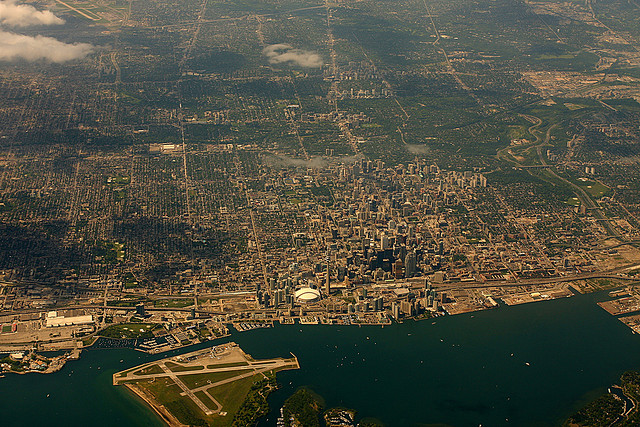Are we fed up yet? Between a seemingly interminable campaign season and a record 64 per cent voter turnout, election-weary Torontonians might be forgiven for being a bit bleary-eyed in the days following, while the reality of an end to the Ford era sinks. But what have we woken up to?
We’ve woken up to the disappointing reality of a polarized city that is the mirror image of those neighbourhoods that are plagued by social inequity. And the blame for this doesn’t necessarily fall entirely on every downtown voter’s favourite punching bag — the Ford brothers.
The split in majority support reads like two cities: the East and West versus the Rest. Once again, it’s Scarborough and Etobicoke versus downtown. In other words, the more things change, the more they stay the same.
We’ve woken up to a vision that lists Toronto’s top three priorities as “better transit, more jobs and an end to the gridlock that is choking our streets.” Herein lies the consequent danger of a polarized election result. Is there anything else that most Torontonians really want?
We may never know. Analysts have quickly pointed out that the wards with low average incomes favoured Doug Ford, while wards with high average incomes favoured John Tory and, to some extent, Olivia Chow. But the relationships run much deeper than this — indeed, as deep as the campaign platforms that promised the world without specifying how we will pay for it.
Wards with low average incomes did support Doug Ford. But they are also the wards with the highest proportion of racialized populations and immigrants, and historically lowest voter turnouts. Ford Nation may be smaller than it seems because many residents in these areas feel marginalized on several counts (economically, socially and politically) and simply do not feel that their vote makes a difference.
We’ve woken up to a vision that is frighteningly silent on poverty, the expansion of social housing and shelter supports, wage and employment equity, and child care. And where do the people who are most affected by these issues live? That’s right: in the East and West. But in this round, the Rest won, both in terms of candidate and policy platform.
Things don’t get much better in City Council: 14 female councillors and even fewer representatives from visible minorities out of a total of 44, in a city where more than half the population are women.
Life doesn’t begin and end with large-scale transit plans. It moves quietly along every day with social support for vulnerable groups, safe and affordable places to live, equal economic opportunities for women and men, and affordable and accessible child care.
Ending downtown gridlock doesn’t alleviate suburban marginalization. And issues such as safety and shelter supports that have a differentiated impact on women have consistently received precious little or no attention. The composition of the incoming government really doesn’t bode well for the future.
We may have very well voted for an increased level of civility in city hall, but our results show that we have taken a step away from equity. To make this right, we must work toward a future in which the needs of all residents of Toronto are given meaningful policy attention. A future in which marginalized groups don’t become lost in the hubbub of island airport noise and reducing waste at city hall. A future that honestly acknowledges and communicates the financial changes needed to have the infrastructure and social programs that we want.
And, hopefully by 2018, a future in which a high voter turnout reflects a genuinely high level of engagement with our municipal government from all parts of the city. Mr. Tory, let’s work to wake up to something better.
Kara Santokie, PhD, is the Director of Toronto Women’s City Alliance.
This piece also appeared on the Toronto Star.
Photo: flickr/Martin Cathrae



